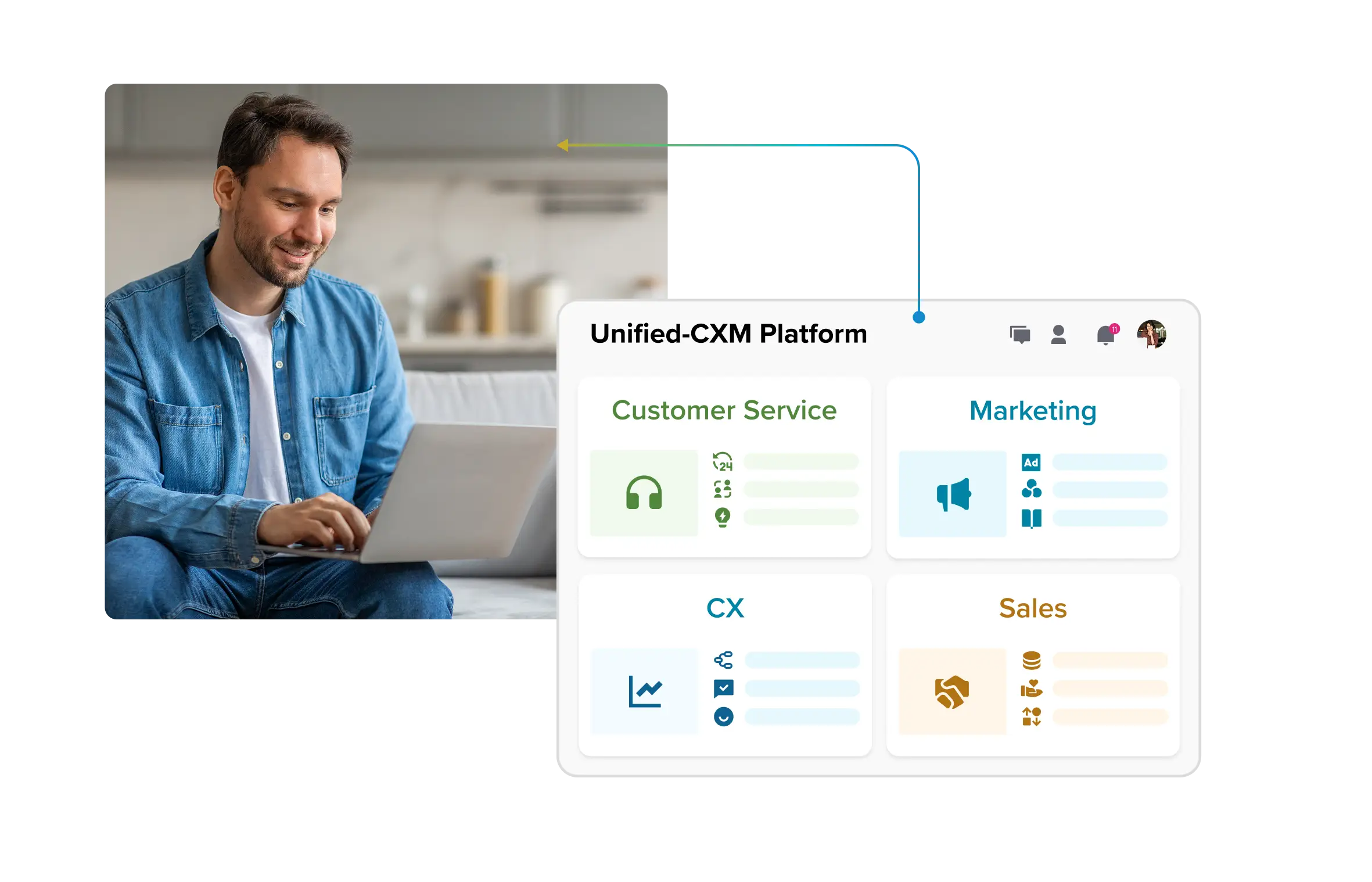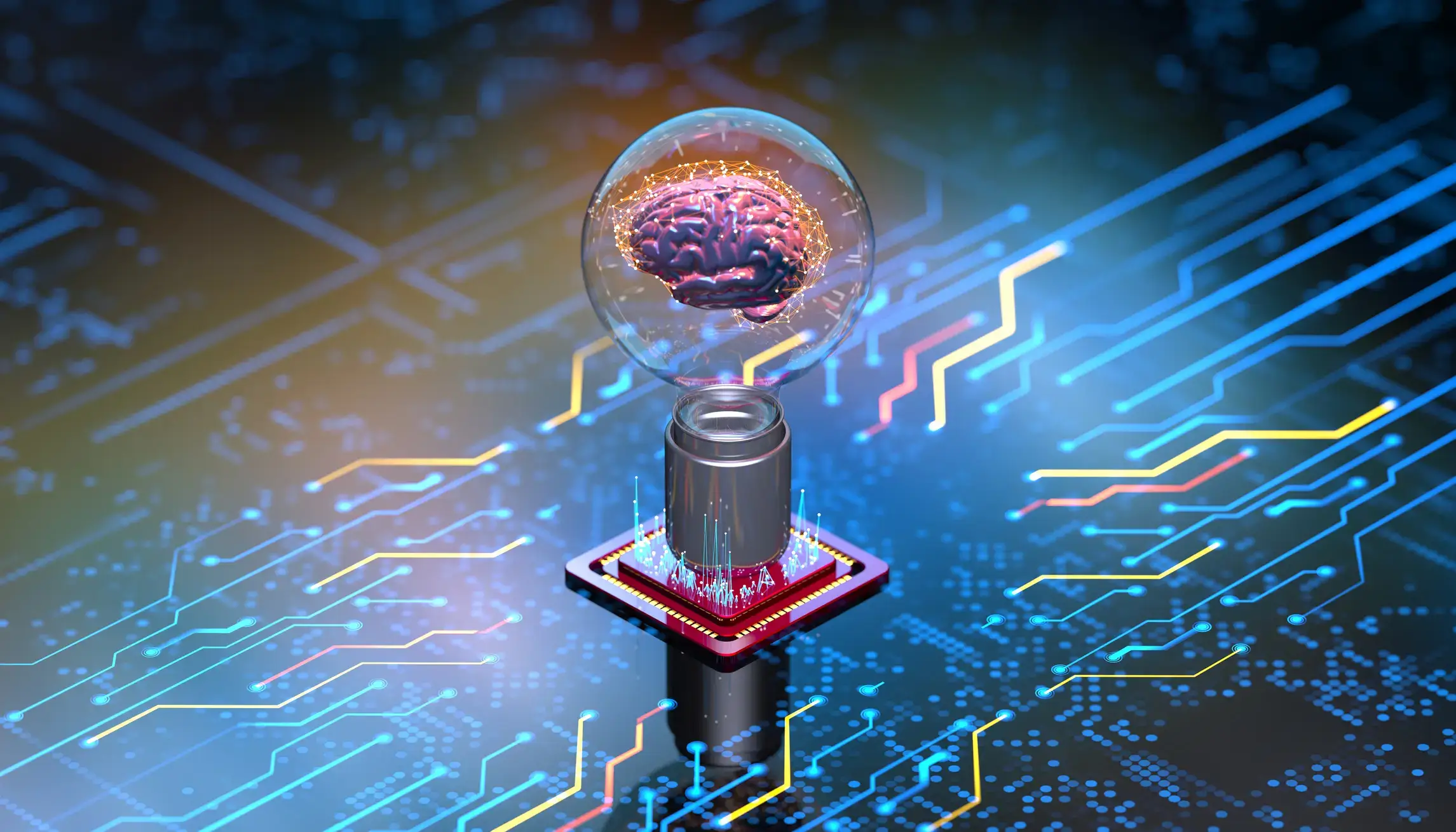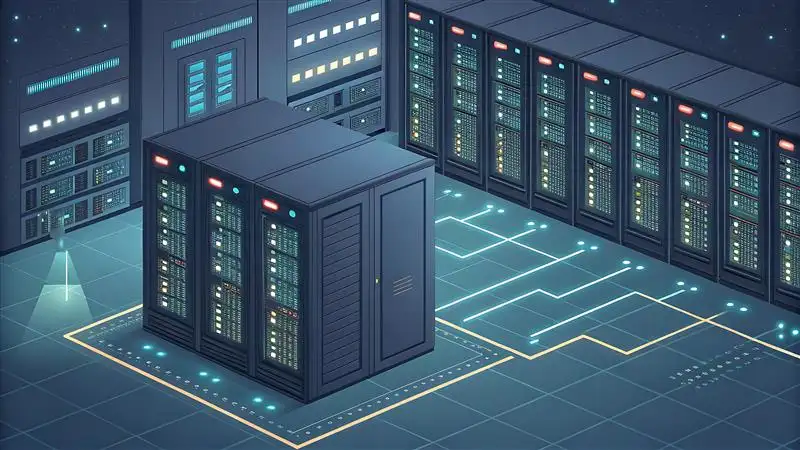The strategic AI-native platform for customer experience management
The strategic AI-native platform for customer experience management Unify your customer-facing functions — from marketing and sales to customer experience and service — on a customizable, scalable, and fully extensible AI-native platform.

What Are Multi-Agent AI Systems? Use Cases, Benefits & the Future of Customer Support
Customer service is entering a new era — not just with smarter AI, but with smarter systems. Traditional chatbots and single-agent models can no longer handle the complexity of today’s customer journeys. What’s emerging instead is a modular, orchestrated approach of multi-agent AI systems designed to plan, collaborate, and act autonomously across diverse touchpoints.
These systems go beyond answering queries. They break down tasks, invoke tools, share context, and coordinate with other agents, functioning more like a team of specialized digital workers than a standalone Q&A chatbot.
In practice, this means an AI “concierge” can evaluate a request, choose the right virtual assistant(s) to involve, and carry the entire interaction through multiple steps. The image below illustrates how a single LLM (left) compares to an agentic multi-step workflow (right). A single-step LLM model takes an input prompt and produces one output. In an agentic AI workflow, an “Agent” breaks the task into subtasks, invoking tools (OCR, APIs, web search), and chaining results before final output.
The result is scalable, intelligent customer support that adapts in real time, learns continuously, and drives both personalization and productivity.
If you talk about business impact, Gartner predicts that by 2029, 80% of standard customer service queries will be handled autonomously by AI agents, enabling up to a 30% reduction in operating costs. Forrester notes that enterprises are moving beyond traditional AI agents toward something far more transformative: agentic AI, which can not only answer questions but coordinate end-to-end solutions.
This article explores how multi-agent architectures work, why they matter now, and how enterprises can begin deploying them to redefine service delivery.
Orchestrating multi-agent systems for complex customer journeys
Modern customer journeys often span multiple departments and touchpoints. AI agents enable collaboration and orchestration across these domains. In a multi-agent system, different AI agents specialize (for example, one handles billing inquiries while another schedules service appointments), and an orchestration layer routes user requests to the right helper. Each agent can send messages or broadcast findings to others, sharing information as needed. This modular design means one agent’s output can trigger another.
For example, a customer’s question about a delayed shipment might involve an agent fetching shipping data and another agent drafting an apology or resolution offer. Such architecture is modular and flexible. Agents can be added or modified without overhauling the system — and it excels at “complex workflow handling”. By distributing tasks, multi- agent setups keep each AI component focused on a narrow task (improving accuracy and speed), yet together they handle full end-to-end processes.
Here’s how multi-agent systems work together under the hood for seamless orchestration:
- Modularity & Specialization: Each agent does one thing well (FAQ answers, transaction handling, data lookup, etc.), making the system easier to extend and maintain.
- Dynamic Collaboration: Agents can hand off tasks or collaborate in real time. For example, if one agent reaches the limits of its knowledge, it can ask another (or a human) for help, ensuring seamless escalation.
- Secure Tool Use: The system can confine each agent to only the tools it needs (RAG search, databases, CRM APIs), reducing risk and improving data security.
- Context Sharing: A shared memory or “workspace” lets agents pass along customer context. If one agent looked up a user’s order history, that data can inform another agent’s actions (like recommending an alternative product).
How multi-agent AI systems power personalized, goal-oriented service
Beyond modular design and orchestration, what truly sets multi-agent systems apart is how they think, remember, and act. These systems aren’t just reactive; they’re capable of learning from each interaction, using tools autonomously, and tailoring responses at scale, by leveraging:
1. Memory, context and continuous learning
Advanced agents maintain an ongoing dialog history and learn continuously from interactions. Rather than treating each session in isolation, agentic systems can build a user profile (with permission) and recall prior preferences or solutions. This enables true personalization: one agent might say “Hello again, I see you’re following up on last week’s support ticket...” and adapt its suggestions accordingly. Such memory can be short-term (recalling conversation context) or long-term (remembering user preferences over months).
Analysts emphasize that today’s customers expect this level of personalization. 71% of consumers say they want tailored experiences, and a similar 76% become frustrated if they don’t get them.
Agents also use real-time context, such as the user’s current location, device, or sentiment, to fine-tune responses. For example, an agent could note a customer is unusually upset and proactively escalate the issue or route to a higher-tier agent.
2. Autonomous planning and tool use
Unlike traditional bots, these agents don’t wait for commands. They can plan, decide, and act — running diagnostic scripts, placing orders, or integrating with external systems (like CRM, ERP, APIs) to complete tasks across multiple steps
For example, if a customer says “resolve my cable outage,” an agentic system could autonomously run diagnostic scripts (via tools), propose fixes (like rebooting the modem), and if needed schedule a technician — all in one conversation.
Additionally, agentic AI can use external tools and data sources during a conversation. An agent might pull in ERP data, knowledge-base articles, CRM records, or even call a web API to check inventory. This means the AI isn’t limited to its training — it effectively has an “internet of enterprise” at its fingertips. For instance, in travel industry support an agent could simultaneously query booking databases, weather forecasts, and traffic APIs to advise a stranded traveler. By automating these multistep processes, agents significantly reduce manual work.
3. Personalization at scale
By combining memory, reasoning, and collaboration, AI agents can deliver hyper-personalized support to millions of customers at once. They can recall each person’s past orders, preferences, and context to craft a tailored experience. For example, an insurance AI agent might remember an agent’s earlier claim history to proactively suggest policy changes, or a banking agent might cross-sell services based on a customer’s account behavior.
Personalization also means anticipating needs before customers ask. An agent could flag an upcoming renewal and offer a discount proactively or detect through sentiment analysis when a user is dissatisfied and apologize immediately. Importantly, generative AI and agentic systems make this scalable. Tasks like writing personalized emails or chat messages can be automated. Satisfied customers benefit from faster, more relevant service, while companies can serve each user with a customized approach that was previously possible only for VIPs.
Driving operational efficiency and data intelligence across the service org
While customer-facing experiences improve dramatically, the impact of agentic AI is equally profound behind the scenes where automation, analytics, and always-on scalability redefine operational performance.
Early results are compelling: organizations report up to 30–45% productivity gains in customer care functions after applying advanced AI.
Monitoring and quality control become smarter, too. Before AI, a supervisor might review only 1–2% of cases by hand. With AI assistants, 100% of interactions can be analyzed for compliance and insights. This comprehensive data enables continuous improvement in products and policies. For example, AI analytics might reveal a recurring API failure from thousands of chat logs, triggering a fix.
Cost savings come from multiple angles:
- Reducing human touchpoints slashes labor costs
- Accurate automation cuts error rates and repeat calls
Gartner predicts a 30% reduction in operational expenses as agentic AI matures in support centers. And because AI-driven agents work 24/7 without fatigue, companies can scale support globally without linear headcount growth. Overall, expert forecasts see a multi-billion-dollar market surge in AI-powered service: one estimate projects agentic AI in CX will drive a $47.1 billion market by 2030 (reflecting huge demand). The bottom line is AI agents yield operational agility, cost efficiency, and richer data intelligence that together can transform the entire customer service model.
Conclusion: Toward the Autonomous Service Future
AI agents marks a fundamental shift in customer service delivery, moving from reactive, scripted support to proactive, intelligent systems that can think, plan, and collaborate independently.
With multi-agent workflows, tool integration, contextual memory, and continuous learning, organizations can now tackle complex service journeys with unprecedented speed, precision, and personalization.
And the payoff isn’t just customer-facing. The operational gains from productivity boosts, 24/7 scalability, and richer data intelligence position agentic AI as a strategic lever for enterprise-wide transformation.
For CX and IT leaders, the message is clear: this shift is already underway. Early adopters are gaining measurable advantages, from faster resolution times to lower service costs. When done right, this goes well beyond conventional AI-powered support. It paves the way to an autonomous contact center where routine problems are solved instantly by intelligent multi-agent systems and human teams focus on what they do best — creative problem-solving and empathetic care.











